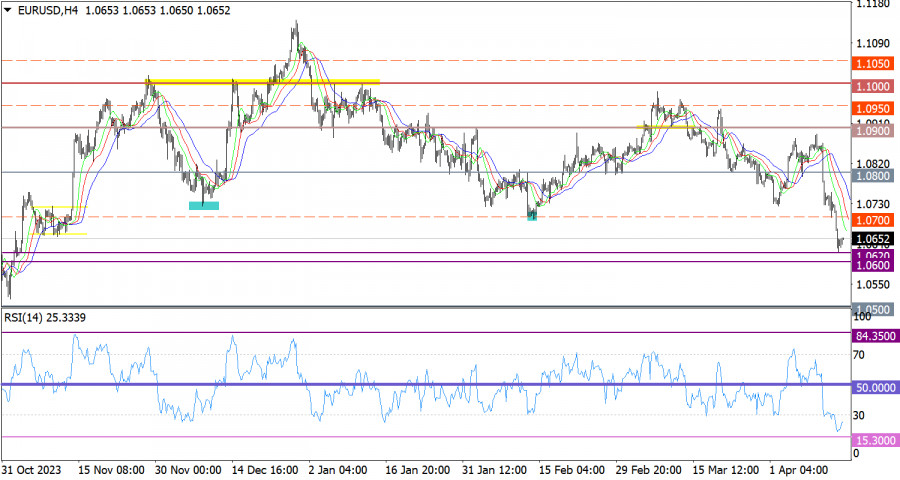
So, the European Central Bank has confirmed its intention to start cutting rates in June, which has become the fundamental reason why the euro is falling. And while it was quite a logical move, it is also worth highlighting the pair's excessive local oversold condition. So, a correction is extremely necessary at the moment. However, the problem lies in the fact that even the macro reports cannot provide a reason to make it happen. The pace of decline in euro area industrial output should slow down from -6.7% to -4.2%. However, the growth rate of retail sales in the United States is expected to accelerate from 1.5% to 2.5%. And considering that the retail sales report carries much more weight than industrial output, only the euro's excessive oversold condition can save the currency from falling further. In other words, the most likely scenario is an attempt to consolidate around current levels. On the other hand, it is unlikely for the euro to fall further. Between these two possibilities, there was a minor correction in the direction of the euro's growth.

The EUR/USD pair had dropped 2% during the past week. This is one of the most significant price changes that we have seen recently, which may indicate a shift in trading interests in the medium term.
On the 4-hour chart, the RSI is hovering in the oversold zone, which suggests that the instrument may be due for a price correction.
On the same chart, the Alligator's MAs are headed downwards, corresponding to the direction of the bearish cycle.
OutlookIn order to increase the volume of short positions despite signs of oversold conditions, the price must settle below the level of 1.0600. In this case, the price could move towards the 2023 local low. Otherwise, the area around the 1.0600 level may act as support, leading to a rebound.
In terms of complex indicator analysis, indicators point to a downward cycle in the short-term and intraday periods.